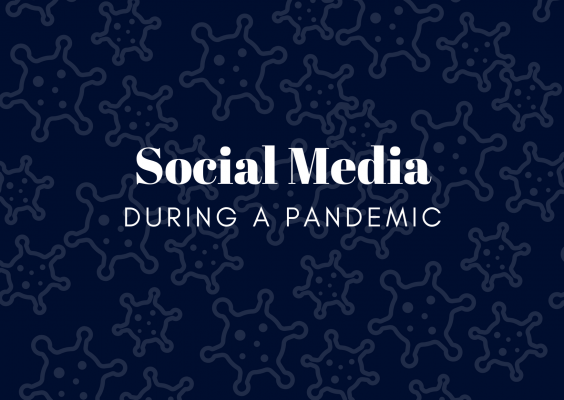The coronavirus pandemic impacted every aspect of life as we knew it, and higher ed wasn’t spared. Classes went online, spring sports were cancelled, graduation had to find a new avenue, and there was absolutely no playbook that could’ve helped or prepared any of us for the uprooting and uncertainty that occurred.
The last couple months have been some of the craziest, hectic, most intense months of most of our careers, but I take comfort knowing that my job as a social media manager was able to help be a (small) guiding light in all of it.
Social Media’s Impact
I’ll be the first to say it, social media gets a bad rep. To a casual user, it’s easy to think that social media is a cesspool filled with misinformation, bad news, and drama. But to those of us who spend most of our days working on each platform know that there’s a lot of good that happens on social.
Social media has been front and center during this entire pandemic and has served as one of UConn’s main hubs for getting accurate and timely information to all of our audiences. We used Facebook, Twitter, and Instagram Stories as our prominent channels to ensure we reached students, faculty, staff, and parents where they're at.
When coronavirus conversations first started, we knew it was important to create a cohesive style of posts and relevant graphics and photos to go with whatever coronavirus-related content we were pushing out. Taking advantage of Twitter’s threading capabilities, putting a date on all social posts, and always linking to our main coronavirus webpage were key to building crisis communication recognition among our audiences.
On top of pushing daily updates out on social, our University President started hosting Live Town Halls on YouTube that would allow university leadership to answer people’s questions in real time and provide campus updates on policies, procedures, and future plans.
The Calm After the Storm
Once the initial adjustments to “going remote” were complete, our students and researchers were right back at it identifying and figuring out ways to combat the virus. We had people working on ventilator prototypes, researchers working on vaccines, students charting the spread of the virus, we even had a team of faculty team up to offer a free, one-credit course on the pandemic for UConn students, faculty, and staff. That multidiscipline class quickly became UConn’s largest class in history with more than 4,000 people enrolled.
While we still share important daily coronavirus updates on social, we have been able to pivot to share all of these great stories and really show UConn’s impact on our campus community, our state, and the nation in this time of need.
Giving Social a Seat at the Table
If you would’ve asked me what the future of social was nine months ago, I wouldn’t have been confident in saying that it would continue to progress and sustain as we’ve seen it do in the past—that’s a theory for a different time.
Advocating for social to have seat at the table has been constant battle. We're always working to prove the importance of social, the impact of social, and necessity of social. If this pandemic has given us anything, it's a broader perspective on the importance and value social media has in reaching appropriate audience in a timely, accurate manner, in connecting students, faculty, and staff who suddenly found themselves socially distant, and serving as a resource of information. There’s no doubt that leadership teams everywhere will be giving social a seat at the table moving forward.
